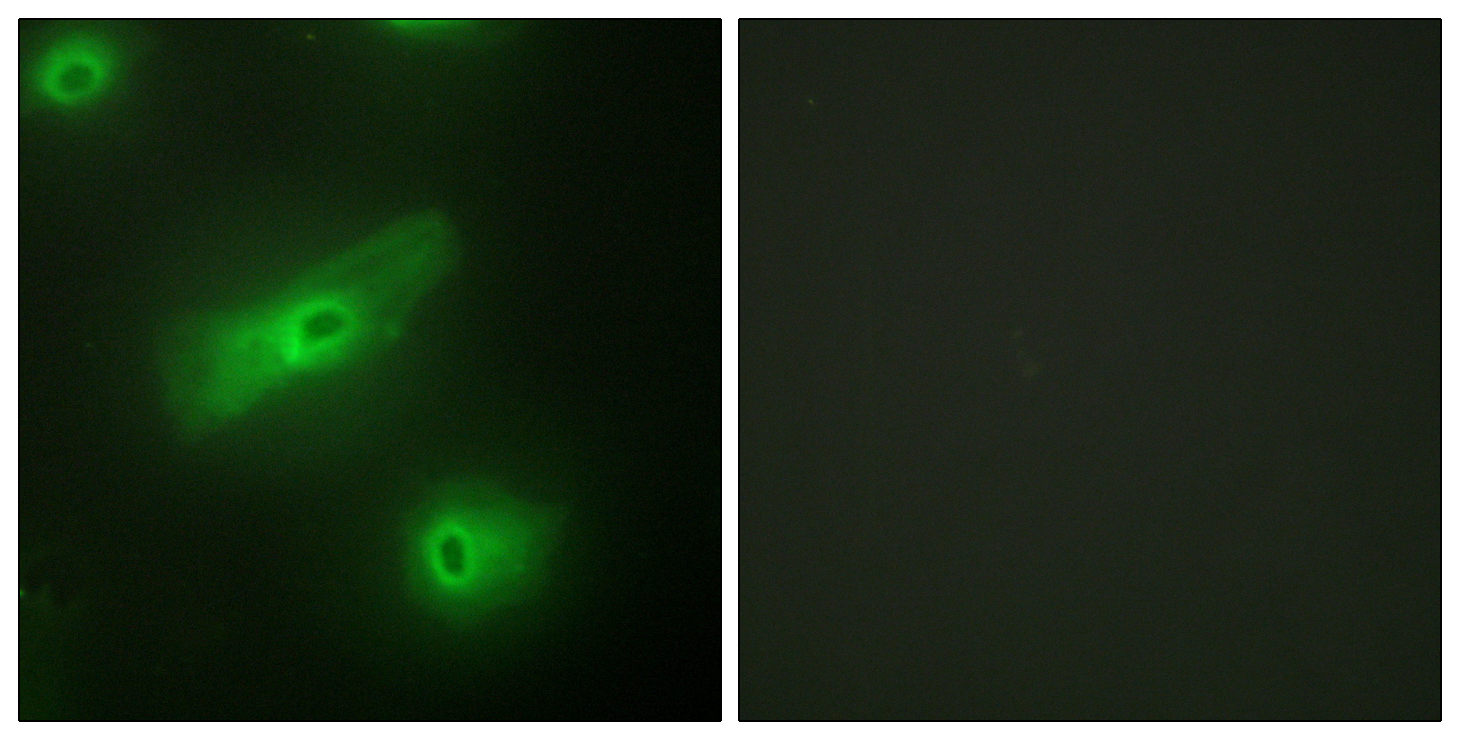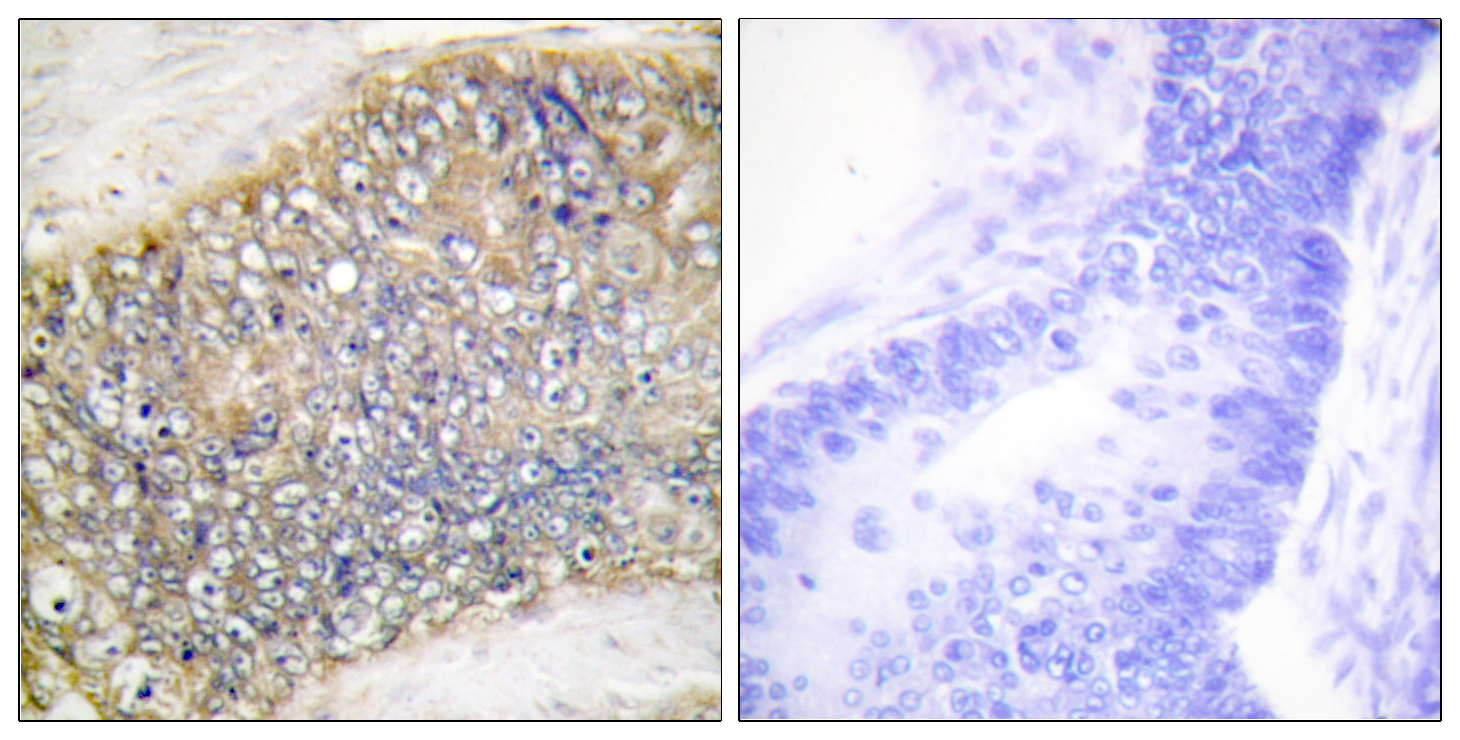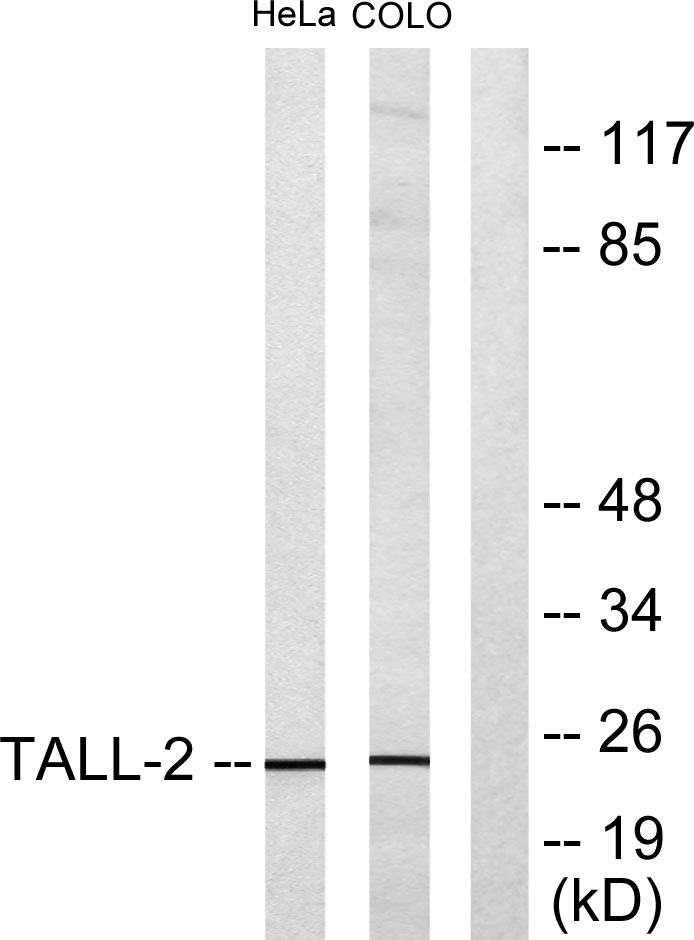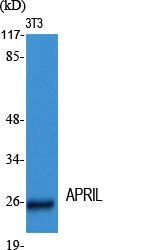产品名称
APRIL Rabbit Polyclonal Antibody
别名
TNFSF13; APRIL; TALL2; ZTNF2; Tumor necrosis factor ligand superfamily member 13; A proliferation-inducing ligand; APRIL; TNF- and APOL-related leukocyte expressed ligand 2; TALL-2; TNF-related death ligand 1; TRDL-1; CD antigen CD256
蛋白名称
Tumor necrosis factor ligand superfamily member 13
存储缓冲液
Liquid in PBS containing 50% glycerol, 0.5% BSA and 0.02% New type preservative N.
Human Gene Link
http://www.ncbi.nlm.nih.gov/sites/entrez?db=gene&term=8741
Human Swissprot No.
O75888
Human Swissprot Link
http://www.uniprot.org/uniprotkb/O75888/entry
Mouse Gene Link
http://www.ncbi.nlm.nih.gov/sites/entrez?db=gene&term=69583
Mouse Swissprot No.
Q9D777
Mouse Swissprot Link
http://www.uniprot.org/uniprot/Q9D777
免疫原
The antiserum was produced against synthesized peptide derived from human TALL-2. AA range:151-200
特异性
APRIL Polyclonal Antibody detects endogenous levels of APRIL protein.
稀释度
WB 1:500 - 1:2000. IHC 1:100 - 1:300. IF 1:200 - 1:1000. ELISA: 1:10000. Not yet tested in other applications.
宿主
Polyclonal, Rabbit,IgG
背景介绍
The protein encoded by this gene is a member of the tumor necrosis factor (TNF) ligand family. This protein is a ligand for TNFRSF17/BCMA, a member of the TNF receptor family. This protein and its receptor are both found to be important for B cell development. In vitro experiments suggested that this protein may be able to induce apoptosis through its interaction with other TNF receptor family proteins such as TNFRSF6/FAS and TNFRSF14/HVEM. Alternative splicing results in multiple transcript variants. Some transcripts that skip the last exon of the upstream gene (TNFSF12) and continue into the second exon of this gene have been identified; such read-through transcripts are contained in GeneID 407977, TNFSF12-TNFSF13. [provided by RefSeq, Oct 2010],
组织表达
Expressed at high levels in transformed cell lines, cancers of colon, thyroid, lymphoid tissues and specifically expressed in monocytes and macrophages.
功能
function:Binds to FN14 and possibly also to TNRFSF12/APO3. Weak inducer of apoptosis in some cell types. Mediates NF-kappa-B activation. Promotes angiogenesis and the proliferation of endothelial cells. Also involved in induction of inflammatory cytokines.,function:Cytokine that binds to TNFRSF13B/TACI and to TNFRSF17/BCMA. May be implicated in the regulation of tumor cell growth. May be involved in monocyte/macrophage-mediated immunological processes.,induction:Down-regulated by phorbol myristate acetate/ionomycin treatment.,PTM:The precursor is cleaved by furin.,PTM:The soluble form derives from the membrane form by proteolytic processing.,similarity:Belongs to the tumor necrosis factor family.,subunit:Homotrimer (Potential). Interacts with the angiogenic factor AGGF1/VG5Q.,subunit:Homotrimer .,tissue specificity:Expressed at high levels in transformed cell lines, cancers of colon, thyroid, lymphoid tissues and specifically expressed in monocytes and macrophages.,tissue specificity:Highly expressed in adult heart, pancreas, skeletal muscle, brain, colon, small intestine, lung, ovary, prostate, spleen, lymph node, appendix and peripheral blood lymphocytes. Low expression in kidney, testis, liver, placenta, thymus and bone marrow. Also detected in fetal kidney, liver, lung and brain.,
纯化
The antibody was affinity-purified from rabbit antiserum by affinity-chromatography using epitope-specific immunogen.




.jpg)
